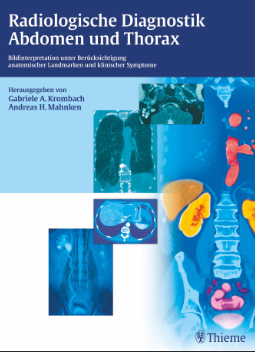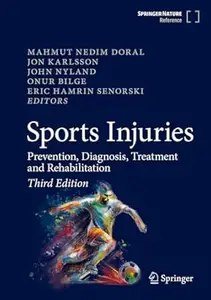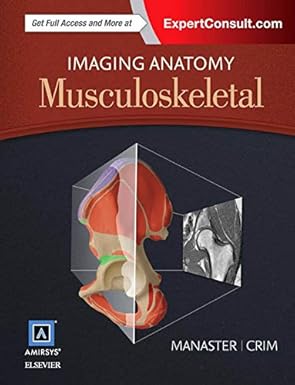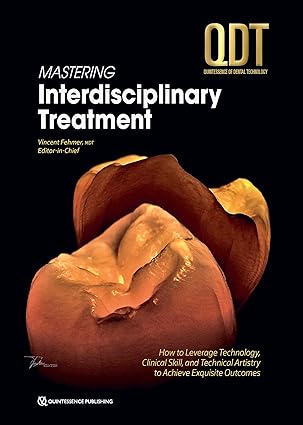Bei Rhinitis und Sinusitis spielt die Bildgebung keine Rolle. Erst wenn klinische Hinweise auf Komplikationen bestehen (Orbi- taphlegmone, intraorbitaler periostaler Abszess, epiduraler bzw. subduraler Abszess, Meningitis, Thrombose des Sinus cavernosus oder des Sinus sagittalis), ist die Bildgebung indiziert. Außerdem ist die CT der Nasennebenhöhlen indiziert, wenn bei chronischer Sinusitis eine endoskopische Therapie geplant ist. Die CT hat das Ziel, anatomische Normvarianten darzustellen, die zum einen zur Sinusitis prädisponieren und zum anderen vom Operateur beach- tet werden müssen, um die Verletzung wichtiger Strukturen zu vermeiden. Im Felsenbein müssen in der CT und der MRT Vestibulum, Schnecke und Bogengänge identifiziert werden. Das Vestibulum kommt als ovaläre Struktur zur Darstellung und kann als Land- marke zur Identifikation der Bogengänge herangezogen werden (▶ Abb. 1.1). Bei transversaler Schichtorientierung liegt nur der laterale Bogengang in der Schichtebene und ist so auf wenigen Schichten in seiner Gesamtlänge dargestellt. Der anteriore und der posteriore Bogengang durchlaufen die Schichtebenen ortho- grad. Sie werden anhand ihrer Ausrichtung identifiziert (s. ▶ Abb. 1.1b). 1.1.2 Mediastinum Bei der Beurteilung des Mediastinums dient die Thoraxüber- sichtsaufnahme meist als initiale bildgebende Technik. Die in der Thoraxübersichtsaufnahme sichtbaren Landmarken (S. 111) (▶ Abb. 3.2) erlauben bei Tumoren in vielen Fällen bereits eine Lagebeschreibung. Die Schnittbildgebung mittels CT wird für die meisten Patienten zur weiteren Diagnostik herangezogen und er- möglicht die Beurteilung einer Infiltration benachbarter Struktu- ren sowie das Staging bei Vorliegen von Metastasen. Die MRT ist zur Darstellung einer Infiltration des Spinalkanals über die Neu- roforamina der CT aufgrund ihres Weichteilkontrasts überlegen. Gleiches gilt in vielen Fällen auch für die Darstellung einer Infil- tration des Perikards. Das Mediastinum ist nicht durch Faszien unterteilt, sodass sich Tumoren und Entzündungen per continui- tatem ausbreiten können. Für die Befundbeschreibung wird das Mediastinum in unter- schiedliche Bereiche eingeteilt: Das obere Mediastinum reicht von der oberen Thoraxapertur bis zum Perikard, das untere Me- diastinum vom Perikard bis zum Diaphragma, das vordere Media- stinum von retrosternal bis zum Perikard, das obere Mediastinum bis zur Aorta ascendens. Das mittlere Mediastinum beinhaltet das Herz, den Aortenbogen und die Trachea. Im hinteren Media- stinum befinden sich der Ösophagus, die Aorta descendens, die Vv. azygos und hemiazygos und der Ductus thoracicus. Bildgebung des Körpers 1 22 1.1.3 Herz Für die Untersuchung des Herzens werden die Schnittebenen nicht an den Körperachsen, sondern an den Achsen der Ventrikel orientiert. Für die Durchführung und Befundung von Unter- suchungen des Herzens mittels CT oder MRT ist die Kenntnis der Landmarken für diese Schichtebenen wichtig. Für die Planung einer Untersuchung des Herzens werden in der MRT zunächst transversale Schichten aufgenommen. Anhand dieser wird der einfach angulierte Zweikammerblick geplant, der den linken Vorhof und Ventrikel zeigt (▶ Abb. 1.2; s. auch ▶ Abb. 4.3a). Daran wird im nächsten Schritt der einfach angu- lierte Vierkammerblick geplant (▶ Abb. 1.3; s. auch ▶ Abb. 4.3b). Dieser stellt beide Vorhöfe und Kammern dar. Die doppelt angu- lierte kurze Achse des linken Ventrikels wird anhand des einfach angulierten Zwei- und Vierkammerblicks geplant (▶ Abb. 1.4; s. auch ▶ Abb. 4.3d). Mittels dieser Schichtoriertierung wird der ge- samte linke Ventrikel abgedeckt, sodass mithilfe der Planimetrie daraus die globale Funktion des linken Ventrikelsbestimmt wer- den kann. Anhand dieser Schichten können die langen Achsen ge- plant werden. Diese bestehen aus dem Zwei-, dem Drei- und dem Vierkammerblick (▶ Abb. 1.5, ▶ Abb. 1.6 und ▶ Abb. 1.7; s. auch ▶ Abb. 4.3). Abb. 1.2 Planung des einfach angulierten Zweikammerblicks. a Anhand einer transversalen True-FISP-Aufnahme (True fast Imaging with steady Precession) wird der einfach angulierte Zweikammerblick geplant. Herzapex (Spitze des linken Ventrikels) und Mitralklappe dienen als Landmarken. Der einfach angulierte Zweikammerblick wird orthograd durch diese beiden Punkte geplant. Darüber hinaus wird er parallel zum Septum ausgerichtet. b Zweikammerblick des linken Ventrikels. Linker Vorhof (LA) und linker Ventrikel (LV) sind erk
چکیده فارسی
بی رینیت و سینوزیت در Bildgebung Keine Rolle. Erst wenn klinische Hinweise auf Komplikationen bestehen (Orbi-taphlegmone, intraorbitaler periostaler Abszess, epiduraler bzw. subduraler Abszess, Meningitis, Thrombose des Sinus cavernosus oder des Sinus sagittalis in didgetalis). Außerdem ist die CT der Nasennebenhöhlen indiziert, wenn bei chronischer Sinusitis eine endoskopische Therapie geplant ist. Die CT hat das Ziel, anatomische Normvarianten darzustellen, die zum einen zur Sinusitis prädisponieren und zum anderen vom Operateur beach- tet werden müssen, um die Verletzung wichtiger Strukturen zu vermeiden. Im Felsenbein müssen in der CT und der MRT Vestibulum, Schnecke und Bogengänge identifiziert werden. Das Vestibulum kommt als ovaläre Struktur zur Darstellung und kann als Land-marke zur Identifikation der Bogengänge herangezogen werden (▶ Abb. 1.1). Bei transversaler Schichtorientierung liegt nur der laterale Bogengang in der Schichtebene und ist so auf wenigen Schichten in seiner Gesamtlänge dargestellt. Der anteriore und der posteriore Bogengang durchlaufen die Schichtebenen ortho- grad. Sie werden anhand ihrer Ausrichtung identifiziert (s. ▶ Abb. 1.1b). 1.1.2 Mediastinum Bei der Beurteilung des Mediastinums die Thoraxübersichtsaufnahme meist als starte bildgebende Technik. Die in der Thoraxübersichtsaufnahme sichtbaren Landmarken (S. 111) (▶ Abb. 3.2) erlauben bei Tumoren in vielen Fällen bereits eine Lagebeschreibung. Die Schnittbildgebung mittels CT wird für die meisten Patienten zur weiteren Diagnostik herangezogen und er-möglicht die Beurteilung einer Infiltration benachbarter Struktu-ren sowie das Staging bei Vorliegen von Metastasen. Die MRT ist zur Darstellung einer Infiltration des Spinalkanals über die Neu-roforamina der CT aufgrund ihres Weichteilkontrasts überlegen. Gleiches gilt in vielen Fällen auch für die Darstellung einer Infiltration des Perikards. Das Mediastinum ist nicht durch Faszien unterteilt، sodass sich Tumoren und Entzündungen per continui- tatem ausbreiten können. Für die Befundbeschreibung wird das Mediastinum in unter- schiedliche Bereiche eingeteilt: Das obere Mediastinum reicht von der oberen Thoraxapertur bis zum Perikard, das untere Mediastinum vom Perikard bis zum diaphragma, bis zum diaphragma, داخلی مدیاستن bis zur Aorta صعود می کند. Das mittlere Mediastinum beinhaltet das Herz، den Aortenbogen und die Trachea. Im hinteren Media- stinum befinden sich der Ösophagus, die Aorta descendens, die Vv. azygos und hemiazygos und der ductus thoracicus. Bildgebung des Körpers 1 22 1.1.3 Herz Für die Untersuchung des Herzens werden die Schnittebenen nicht an den Körperachsen, sondern an den Achsen der Ventrikel orientiert. Für die Durchführung und Befundung von Unter- suchungen des Herzens mittels CT oder MRT ist die Kenntnis der Landmarken für diese Schichtebenen wichtig. Für die Planung einer Untersuchung des Herzens werden in der MRT zunächst transversale Schichten aufgenommen. Anhand dieser wird der einfach angulierte Zweikammerblick geplant, der den linken Vorhof und Ventrikel zeigt (▶ Abb. 1.2؛ s. auch ▶ Abb. 4.3a). Daran wird im nächsten Schritt der einfach angu- lierte Vierkammerblick geplant (▶ Abb. 1.3; s. auch ▶ Abb. 4.3b). Dieser stellt beide Vorhöfe und Kammern dar. Die doppelt angu- lierte kurze Achse des linken Ventrikels wird anhand des einfach angulierten Zwei- und Vierkammerblicks geplant (▶ Abb. 1.4; s. auch ▶ Abb. 4.3d). Mittels dieser Schichtoriertierung wird der ge- samte linke Ventrikel abgedeckt, sodass mithilfe der Planimetrie daraus die globale Funktion des linken Ventrikelsbestimmt werden kann. Anhand dieser Schichten können die langen Achsen ge- plant werden. Diese bestehen aus dem Zwei-, dem Drei- und dem Vierkammerblick (▶ Abb. 1.5, ▶ Abb. 1.6 und ▶ Abb. 1.7; s. auch ▶ Abb. 4.3). اب 1.2 Planung des einfach angulierten Zweikammerblicks. یک Anhand einer transversalen True-FISP-Aufnahme (تصویربرداری سریع واقعی با پیشروی ثابت) wird der einfach angulierte Zweikammerblick geplant. هرزاپکس (Spitze des linken Ventrikels) و Mitralklappe dienen als Landmarken. Der einfach angulierte Zweikammerblick wird orthograd durch diese beiden Punkte geplant. Darüber hinaus wird er parallel zum Septum ausgerichtet. b Zweikammerblick des linken Ventrikels. Linker Vorhof (LA) und Linker Ventrikel (LV) sind erk
ادامه ...
بستن ...
Impressum
Bibliografische Information
der Deutschen Nationalbibliothek
Die Deutsche Nationalbibliothek verzeichnet diese Publikation
in der Deutschen Nationalbibliografie; detaillierte bibliografische
Daten sind im Internet über http://dnb.d-nb.de abrufbar.
© 2015 Georg Thieme Verlag KG
Rüdigerstr. 14
70469 Stuttgart
Deutschland
www.thieme.de
Printed in Germany
Redaktion: Dr. Doris Kliem, Urbach
Zeichnungen: Christine Lackner, Ittlingen;
Anatomische Aquarelle aus: Schünke M, Schulte E, Schumacher U.
Prometheus. LernAtlas der Anatomie.
Illustrationen von M. Voll und K. Wesker
Umschlaggestaltung: Thieme Verlagsgruppe
Umschlagfoto: Martina Berge, Stadtbergen
Satz: Druckhaus Götz GmbH, Ludwigsburg,
gesetzt in 3B2, Version 9.1, Unicode
Druck: Aprinta Druck GmbH, Wemding
ISBN 978-3-13-172921-7 1 2 3 4 5 6
Auch erhältlich als E-Book:
eISBN (PDF) 978-3-13-172931-6
eISBN (epub) 978-3-13-201651-4
ادامه ...
بستن ...










